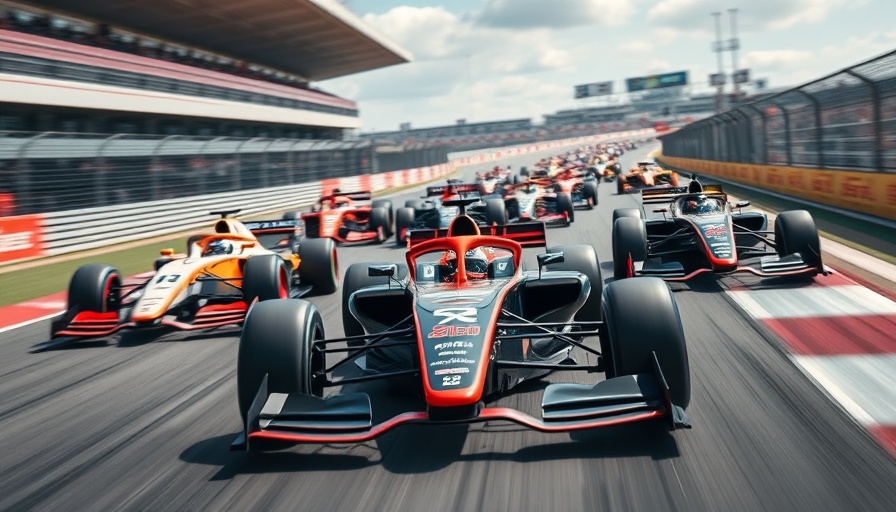
The Science Behind Formula One Racing Suits
As the 2025 Formula One season kicks off in Melbourne, the spotlight is often on the high-speed cars and their drivers. However, the intricate technology of the racing suits worn by F1 drivers is equally noteworthy. These suits are not mere garments; they embody a fusion of safety and performance science, necessary to withstand the intense conditions of the race.
Extreme Conditions on the Track
Driving at speeds nearing 300 kilometers per hour, F1 drivers face unique physiological challenges. The cockpit temperatures can soar to an astonishing 50°C, pushing the limits of the human body's capacity to cope with heat. Research shows that a driver’s skin temperature can escalate from normal levels to over 38°C, leading to potential dehydration, cognitive impairment, and heat-related illnesses.
This physiological strain highlights the critical need for racing suits that not only offer fire protection but also help maintain core body temperature and enhance overall performance during races.
Engineering Excellence in High-Tech Suits
The advancement of racing suits has shifted dramatically over the years. Historically, the primary function of these suits was fireproofing. Modern suits, such as those manufactured by Alpinestars and PUMA, integrate high-performance materials like Nomex, which resist flames and provide lightweight comfort. These suits are designed with pre-curved sleeves, minimal seams for flexibility, and specialized panels that enhance airflow and breathability.
Racing suits now incorporate strategic ventilation zones which manage temperature, helping reduce core temperature rise by up to 40% during races. By understanding areas of higher heat concentration—like the elbows—designers optimize airflow and cooling material placement to deliver more comfort and less hindrance to performance.
The Driver-Centric Design Philosophy
Today’s racing suits are tailored to the specific needs of individual drivers. The adjustable features allow drivers to customize their suits by personalizing ventilation openings and fit, leading to improved comfort levels on the track. With the constant adjustments required in an F1 vehicle, these tailored designs contribute significantly to a driver's performance, ensuring that they remain focused and responsive.
The effect of better-suited technology translates to clear advantages on the circuit, including sharper focus, quicker reaction times, and reduced fatigue. As a result, the design of racing suits has become a pivotal part of the overall F1 racing strategy.
Future Innovations in Racing Gear
The future of racing suits holds exciting innovations that may further enhance driver safety and performance. The integration of reflective materials can mitigate the rate at which body temperature rises, while wearable technology embedded within the suit may enable real-time monitoring of a driver’s physiological status during a race. This could provide invaluable insight into performance impacts and safety considerations.
As the motorsport industry pivots toward electric racing formats such as Formula E, conventional racing suits may also evolve in design priorities, focusing more on comfort and temperature regulation due to the reduced heat produced by electric vehicles.
Conclusion: A Focus on Safety and Comfort
In a world where split-second decisions are vital and a driver’s performance can be the difference between victory and defeat, the innovation behind racing suits is more than fashion—it's about survival and success. As you watch the F1 races this season, take a moment to appreciate the technology that keeps these elite athletes safe, cool, and performing at their best.
For healthcare practitioners interested in the intersections of technology, health, and sports performance, staying informed about advancements in racing gear and their implications can lead to better insights for patient care, especially for those involved in high-performance sports.
 Add Row
Add Row  Add
Add 






Write A Comment